N2 Laser project
N2 laser: a laser without glass and mirrors! A plastic box fill with low pressure N2 with 2 linear electrodes, 2 glasses: one at each end, high-tension capacitors and a self. Capacitors are charging, when tension is high enough, an electric arc occurs between an adjustable screw and ground: a brief high tension difference appears between the 2 electrodes and a few ns short laser pulse in the UV 337.1 nm outputs at each end. Nitrogen Laser in Operation
Dye laser: a little tube with mirrors is filled with Dye (Rhodamine-B...) and alcohol, 2 electrodes and low air pressure form a flash lamp to pump Dye (or a commercial Xenon lamp with special high voltage circuitry and spark-gap triggered capacitor). When flashlight occurs, laser pulses appear generally in the visible spectrum, depending which Dye is used.
Nitrogen Laser used to pump dye
This a dangerous project with high tension and invisible laser emission !
1st Project:
We use double side PCB as capacitor and electrode. bottom and top side is ground connected for safety and efficiency. The inner plate is the + plate capacitor and its edge is used as electrode. A plexiglass piece of tube is epoxy glued at each channel output for optic interface and air proof.
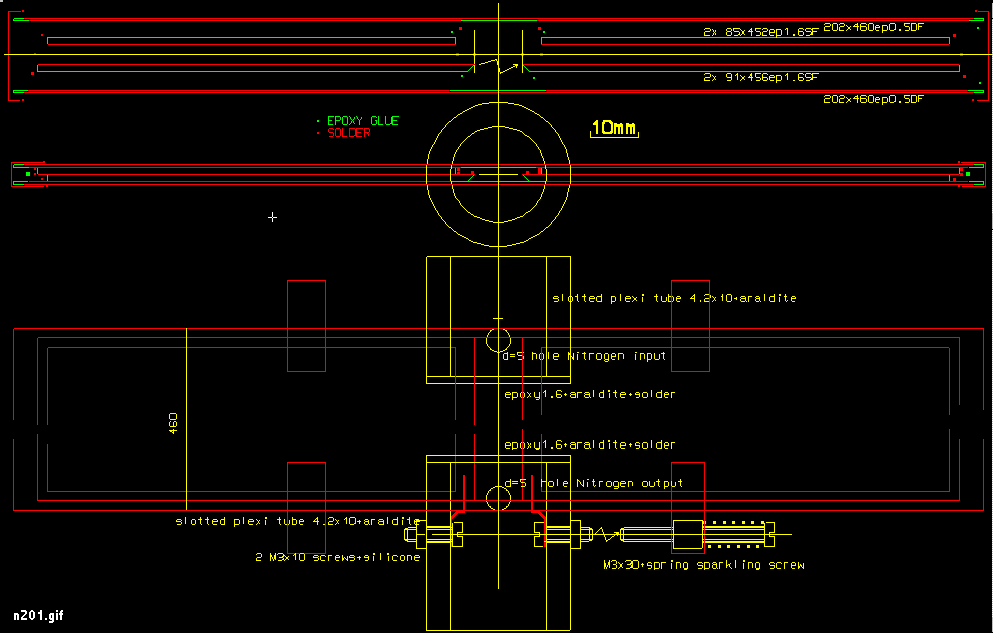
Here is the complet system with a temporary Blumlein self (note that electrodes are not available inside, so self and spark (on the left) must be installed at ends.
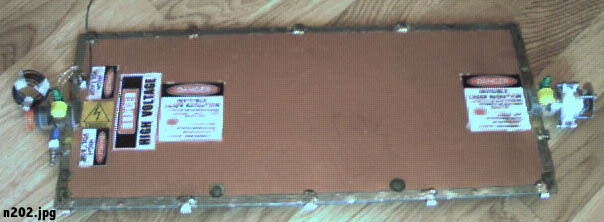
Here are teporary self, faucet, temporary spark (blue) and output glass (installed on the orange plastic part)
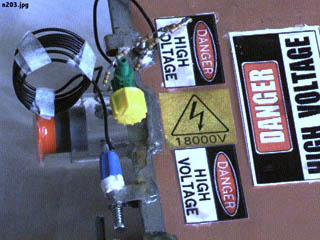
The "definitve" self and its connection to each electrode.
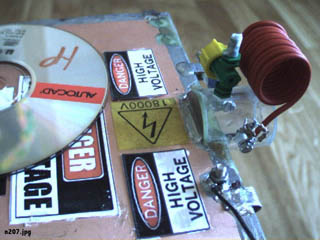
Here, we see the channel and the electrode (soldered PCB edge)
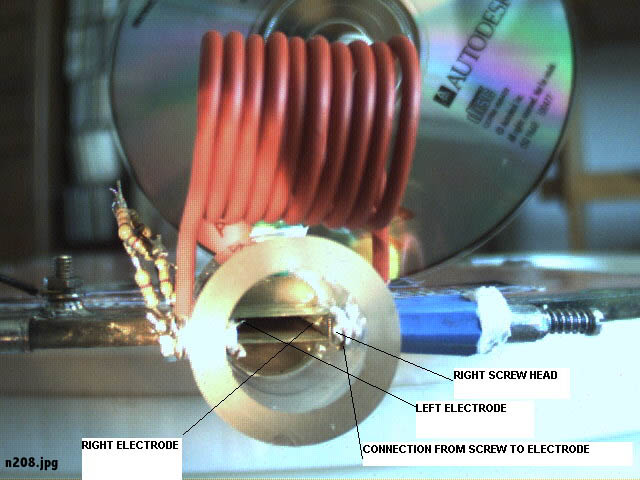
Complete system with dye cavity box and rear mirror.
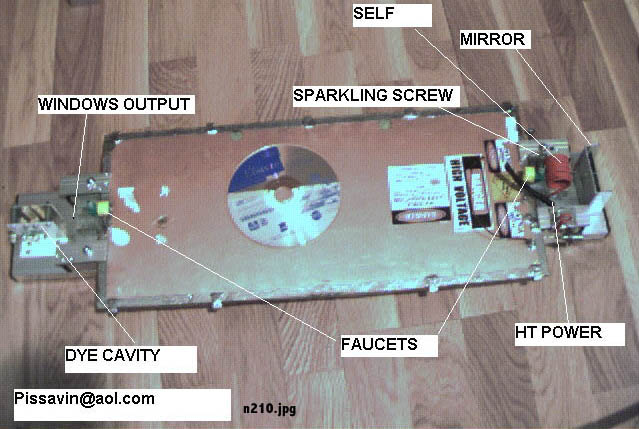
Measurements:
Using probes and oscilloscope in a fast 10kV device can be risky.
Here is a simple way to build a fast, simple and safe, high tension N2 laser probe: with a piece of normal copper wire, realize a 1 turn self, about 5 mm diameter and connect it to a coaxial cable end. Cable is connected to a fast oscilloscope and self is disposed on the N2 laser self axis 30 or 40 mm from the laser's self.
So you can safely record N2 laser self tension. N2 laser capacitors and self is a LC electrical circuit that, once excited must produce exponential decrease sine wave for many us (micro second). Sine wave frequency may be about few MHz. In fact, in practice, the circuit energy is completely absorbed by arc ignition.
Here is a record made on a 1Gs/s TEKTRONIX oscilloscope: (made in air at normal pressure)
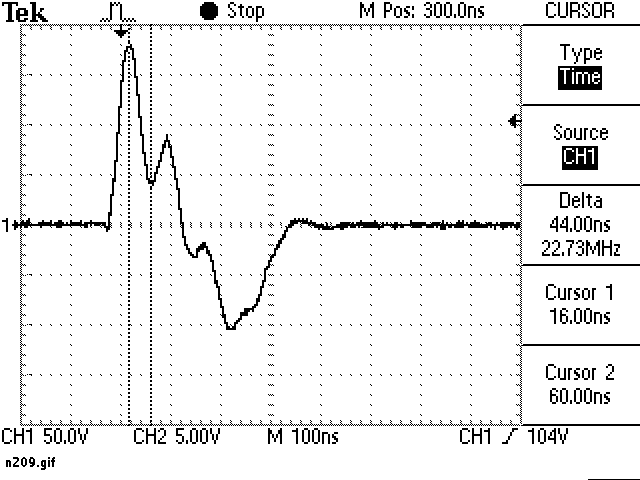
Arc itself is produced during probably something like 40 ns from the first peak to the first valley: when sparkling occurs, tension grows up very quickly, when arc occurs, it falls down very quickly, when tension is too low, arc stops, tension grows up a little bit and ends in disturbed sine oscillation. Well, it's an hypothesis; to confirm that, we need a very fast photodetector and record it's output simultaneously.
2nd Project:
There are some big problems with 1st project:
- We can't see inside the channel: just to see arcing or plasma colour and so on, plasma channel eye control is precious
- Nothing modular or repairable: once built, you can hardly modify something to repair or optimise it: just modify it and see if laser output power increases or decrease is difficult
- Using N2 is really boring: not so easy to find in low quantity (at least here in France)...using low pressure air or even normal pressure air would be far more convenient: that means very high speed low inductance systems and a laser channel perhaps not large enough to pump a dye...
PCB work is a problem: time consuming, hard to repair, hard to modify... We think that plastic film and alumium foil can be as good or even better than PCB to minimize inductance which is a critical problem with TEA air laser: everything must be flat: capacitor, channel, electrodes, spark must be as flat as possible to decrease inductance and reach a very fast rise time to pump air efficiently.
We think that the solution is very near from the Renato page (http://www.geocities.com/resalles/N2/n2_laser.html): a very low inductance sytem based on plastic film and aluminium foil. Renato device can be perhaps improved with non rectangular capacitors plates and perhaps a segmented system...
see the 10$ air laser page
SMC vacuum meter
http://spt06.chez-alice.fr/00/lasers.htm
Any comments?
E-mail : 
03/06/05.^